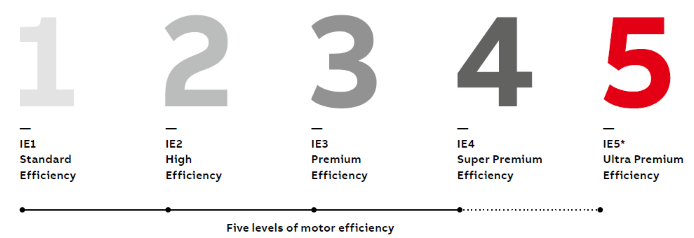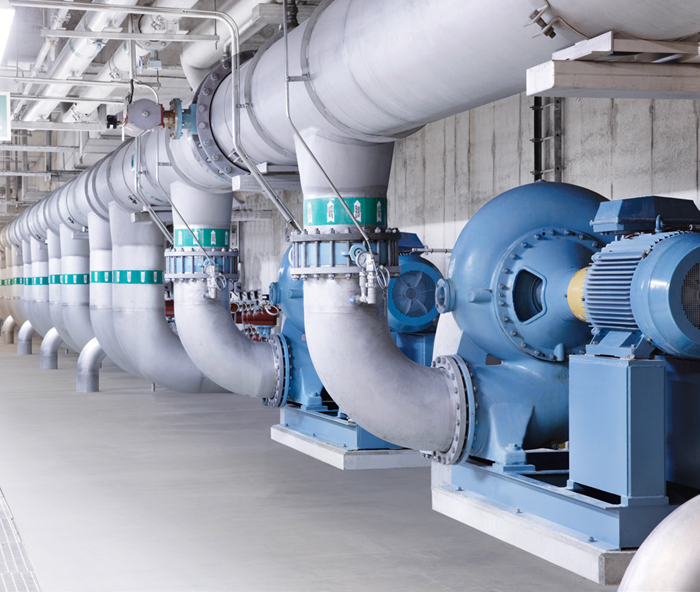Industrial engineering has been shifting toward using greater numbers of smaller motors optimized for specific applications. Matching the output of a motor to the maximum power required for an application already represents a significant step toward achieving increased energy efficiency. However, this efficiency can also lead to increased complexity.
Modern systems effectively address this complexity by implementing smart sensors and internet-connected monitoring systems, which notify operators when a motor shows signs of requiring maintenance or replacement. At the same time, contemporary motor designs provide greater efficiency than in the past. A motor’s efficiency equals its mechanical output power divided by its electrical input power.
The alternating current (AC) induction motor is the most widely used electric motor type, based on 19th-century designs by Galileo Ferraris, Nikola Tesla, and Mikhail Dolivo-Dobrovolsky. These motors have steadily improved over time, thanks to advancements in materials, as well as enhancements to stator and rotor designs.
A standard induction motor is significantly more efficient than any internal combustion engine. The thermal efficiency of the engine powering a typical passenger car rarely exceeds 35 %,11 while nearly all electric motors of comparable output exceed 90 % efficiency.
Contemporary induction motors are available at exceptionally high efficiency levels. Motor efficiency is rated based on a scale published by the International Electrotechnical Commission (IEC). Motors categorized as IE1 or IE2 are comparatively inefficient. A 200 kW AC induction motor that meets the IE3 standard achieves approximately 96 % efficiency.
Many of the latest motors meet the IE4 standard, which specifies around 15 % lower energy losses compared to IE3 motors. The more recent IE5 “ultra-premium efficiency” motor represents the highest efficiency level achieved by any current design.

International Efficiency (IE) standards stipulate the energy efficiency of low-voltage AC motors. These IE codes serve as a reference for governments who specify the efficiency levels for their minimum energy performance standards (MEPS). Image Credit: ABB Motors and Drives North America
*The IE5 class has not been specified in the standard yet, but some manufacturers have already developed motors that will be compliant.

Image Credit: ABB Motors and Drives North America
Too many motors in use today do not meet these standards and rely on older IE1 or IE2 designs. Another challenge is that many of these motors are oversized for the applications they serve. They frequently deliver more power than required, resulting in wasted energy. Considerable gains in efficiency can be achieved simply by deploying motors that are correctly sized for the specific application.
Alongside induction motors, several highly efficient newer motor designs are emerging as practical alternatives. Among these is the synchronous reluctance motor, which combines the performance of a permanent-magnet motor with the simplicity and service-friendliness of an induction motor.
Unlike permanent-magnet motors, synchronous reluctance motors do not require rare-earth-based components. Instead, they achieve maximized reluctance torque from a simple but robust rotor design.
Today, these innovative motors are both practical and remarkably efficient, capable of meeting the proposed IE5 target, first outlined in 2016.12 It is estimated that if 80 % of today’s installed industrial motors were replaced with IE5 ultra-premium efficiency motors, 160 terawatt-hours of energy per year could be saved, more than the annual electricity consumption of Poland.13,14
As the world seeks to improve overall energy efficiency, new applications have emerged that prioritize efficient motor designs. This is especially true for applications that rely on batteries to power a motor.
A battery-powered automobile, for example, cannot afford to waste grid-drawn power and must be carefully designed to minimize consumption while maximizing both range and available power. This demand is driving ongoing technological breakthroughs, coinciding with global growth in electric vehicle sales—a trend expected to continue.
State-of-the-art traction technology, energy storage systems, and e-drivetrain solutions are now enabling an expanding range of zero-emission transport options, including rail, buses, heavy vehicles, and marine vessels.
Zero-emission boats and hybrid ferries are even beginning to appear in the world’s commercial waterways. New innovations in motor design are enabling the rapid adoption of these electric mobility solutions.

This information has been sourced, reviewed and adapted from materials provided by ABB Motors and Drives North America.
For more information on this source, please visit ABB Motors and Drives North America.